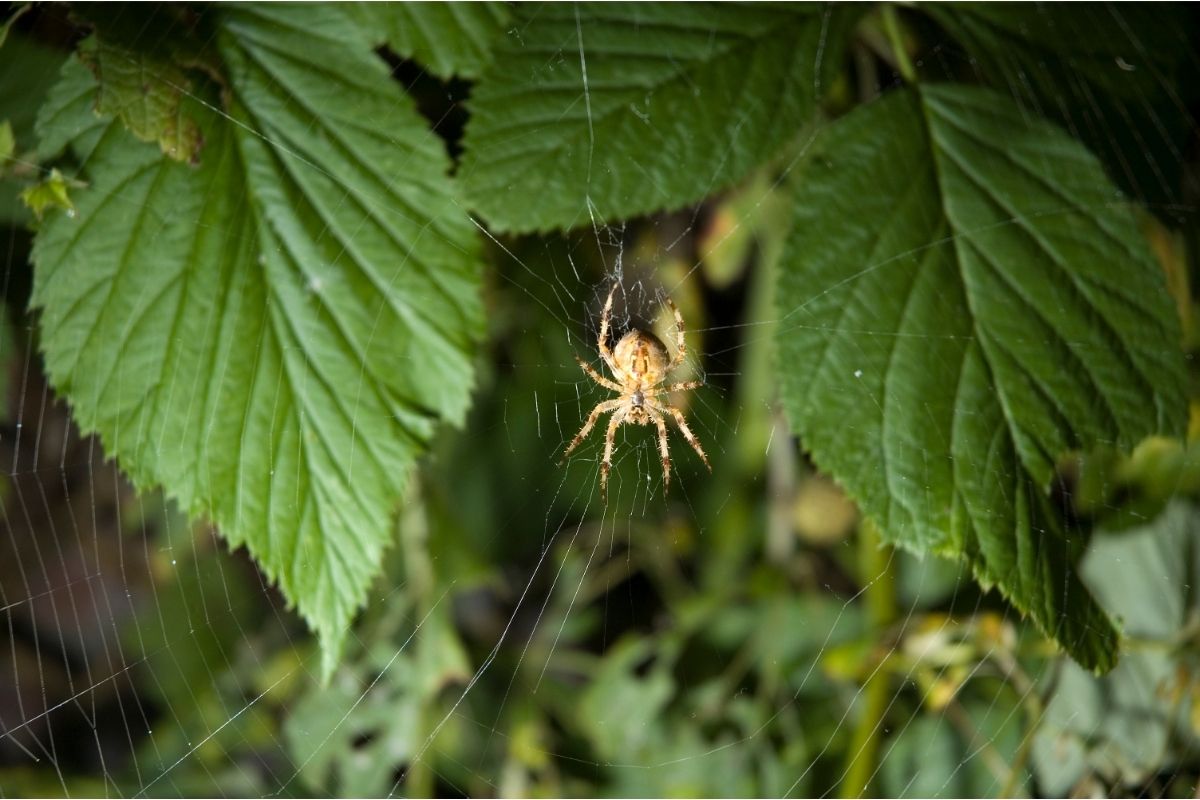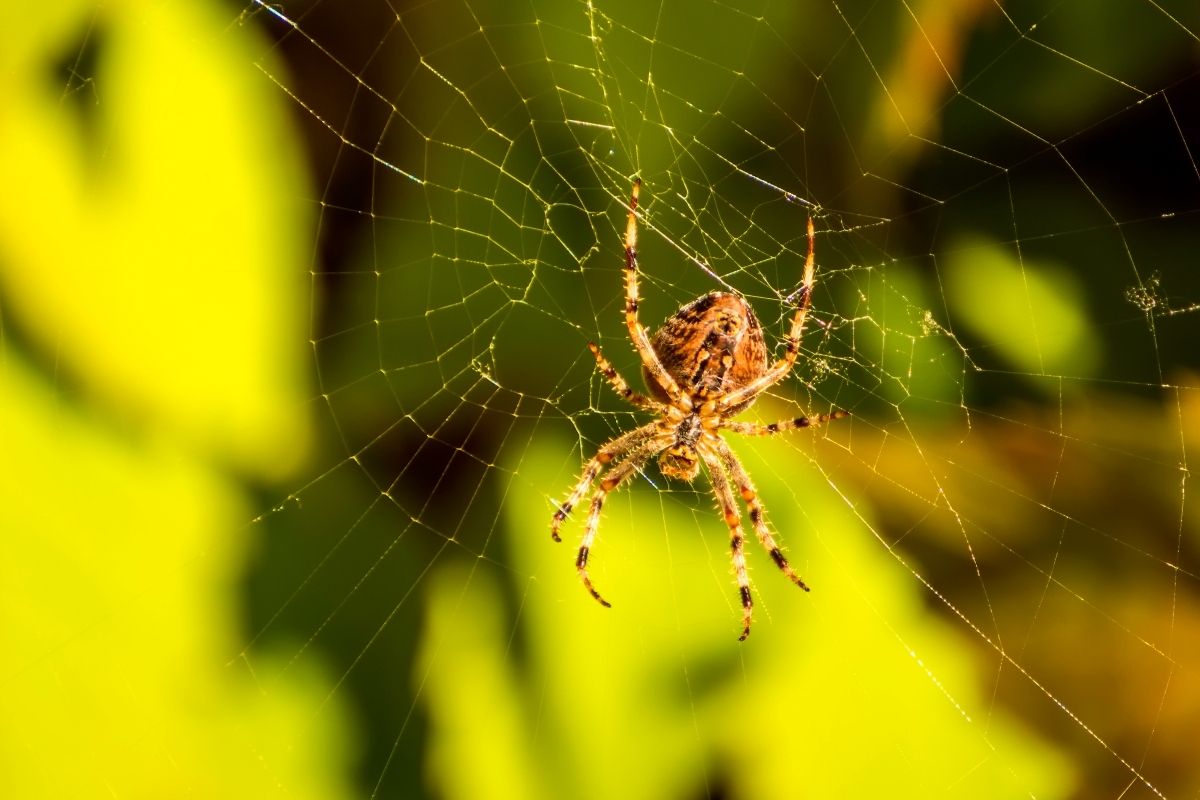The Brown Garden Spider
The brown garden spider is an arachnid found in gardens throughout the United States and other parts of the world. Brown spiders may be web-spinners or hunters. Many are harmless to humans, except the brown recluse spider found in the southwestern United States.
In the garden, spiders catch many insects; however, that can be harmful to plants. Brown garden Spiders, however, are of great benefit to the home garden.
The Types of Brown Spiders in Existence
Brown spiders exist either as web weavers or hunters. Both of these spiders feed on the insects found in the gardens they live in.
Web Weaving Brown Spiders: These brown spiders weave maze-like webs between plants in the garden. The webs create complex funnels. Web weaving brown spiders eat insects in the garden. They capture them in their webs and eat them.
Wolf or Hunting Brown Spiders: This is a gigantic and hairy brown spider, primarily found in the temperate United States. They have a frightening look, although they are pretty harmless. Still, they may attack you if you disturb them when they are on the plants in the garden.

The Life Cycle of the Brown Garden Spider
The different types of brown garden spiders that exist go through the same life cycle. The life cycle of the brown garden spider follows a particular pattern, as shown below:
- Fall: During this time, a brown garden spider finds a mate. After mating, they lay their eggs in the fall. These spiders lay their eggs on fallen leaves, under tree logs, or in garden plants. The sacs for the eggs are usually white or gray and are secured by silken threads.
- Winter: during winter, the egg sacs of the garden spiders remain dormant. Hungry animals may disturb or destroy them completely.
- Spring: If animals do not destroy their egg sacs, they hatch during this season. The young ones of spiders are called spiderlings. Some egg sacs may hatch during fall or winter, but they successfully hatch when they have shelter from the cold weather.
After hatching, the spiderlings crawl to a new place using silk spider parachutes. They call this place home and grow to maturity.
- Summer: Spiders feed on insects caught in their webs during this season. They also hunt for more insects elsewhere in the gardens. After the spiderlings grow to maturity, the males and females mate, lay eggs, and the cycle begin again.
Wolf spiders and other hunting spiders have a life cycle that is quite different. First, the wolf spider females carry the egg sacs on their backs. Then, they attach the sacs on their backs using spider silk. When their spiderlings hatch, they climb on their mothers’ backs and stay there until they are mature enough to begin hunting on their own.
How to Identify a Brown Garden Spider
It is quite easy to identify the brown garden spider in terms of color, and it is usually gray-brown or reddish-brown with a large white cross on its abdomen. The female brown spiders are typically larger than the males.
The brown garden spider has an eight-legged body structure, just as all other arachnids. It has a cephalothorax that contains its head and legs and an enlarged abdomen. It also has fangs on its mouthpart, which it uses to inject venom. Its legs have an orange color with several stripes.
The brown garden spider has several unique characteristics. These characteristics will help you to know more about them:
- Venomous, but not dangerous– this type of spider, like other species, has venom. It uses its venom mostly to attack its prey. The venom is not dangerous to humans. Many gardeners say that the sting of the brown spider is like that of a bee.
- Stabilimentum– this is a tiny patch in the center of the spider web. However, researchers are still trying to determine the purpose of this stabilimentum.
- Hard work– the brown garden spider, is very hardworking. It eats most parts of its web at night and leaves only the primary frame. Then, during the day, it weaves the web again. Researchers believe that the spider recycles nutrients and consumes small food particles.
- Careful courtship– during breeding, the male spider is cautious. It moves into the female’s nest and plucks the strands of its web to entice her. He then drops a safety line to protect him if the female decides to eat him.
If you want to know more about identifying the brown garden spider and other spiders, you can check out the spider identification chart.

Preferred Habitats of the Brown Garden Spider
Just as the name suggests, the brown garden spider lives in gardens and similar habitats. Most of these spiders build their webs in the middle of shrubs, flowers, and other small plants in the gardens. You can also find them in the scrub forest, woodland, grasslands, meadows, farmland, swamps, and other types of habitats.
Are Brown Garden Spiders Poisonous?
Garden spiders are not poisonous, although the correct terminology would be venomous, which they also are not. Although garden spiders possess venom that enables these large spiders to immobilize their prey, their poison isn’t strong enough to pose serious health threats to humans or pets, except in individuals with distressed immune systems.
However, suppose a garden spider manages to bite you by some unlikely chance. In that case, symptoms generally include mild swelling with possible redness and discomfort around the bite site that can last a few days. Garden spider bites are said to be less painful than a wasp or bee sting.
Can Garden Spiders Bite?
Many times, brown garden spiders are not harmful and are not known to bite people. However, they can be aggressive and even bite people if they are disturbed. Also, brown and yellow garden spiders can bite when they feel threatened in any way.
How to Get Rid of Brown Garden Spiders in Your Garden
There are many ways you can get rid of brown garden spiders from your garden. To begin with, you can sprinkle cinnamon in your garden or dry some sticks of cinnamon and put them in your garden.
You can also use vinegar by mixing it with water and spraying the weeds near the spider webs in your garden. However, it would be best not to spray the plants, as vinegar might kill them. Spiders do not like citrus; therefore, you can mix lemon juice with water and spray the weeds in the garden.
Some people use lemon-scented liquid soap to directly spray the brown garden spider webs. Unfortunately, this destroys the eggs and thus disturbs the egg cycles. Another effective way of keeping away the large brown garden spider is by planting spider-repellent plants in your garden. These plants include mint, lavender, and eucalyptus.

The Final Say
The brown garden spider is an insect that is very important to any gardener. As a gardener, do not worry when you see brown spiders in your garden, as they are not harmful. You only need to avoid disturbing them in any way, as their presence in your garden helps to keep away insects that can destroy your plants.
If, by any chance, you get a brown garden spider bite, do not get too worried. Garden spiders are not poisonous. The symptoms of a spider bite generally include mild swelling with possible redness and discomfort around the bite site that can last a few days. Garden spider bites are said to be less painful than a wasp or bee sting.
Therefore, we can conclude that brown garden spiders can live in our gardens in harmony, but we are free to do away with them if we do not want them.
